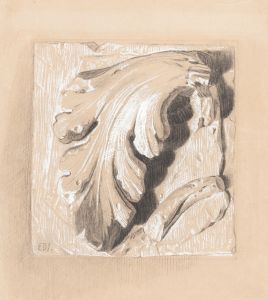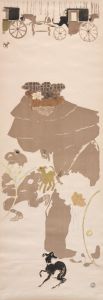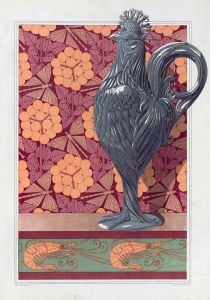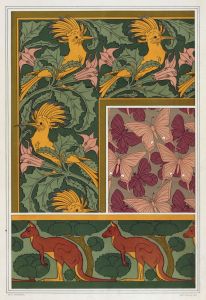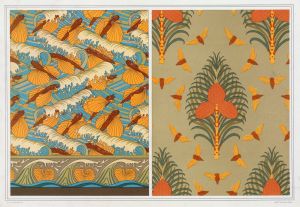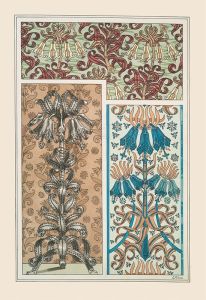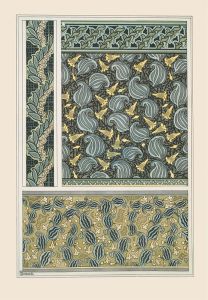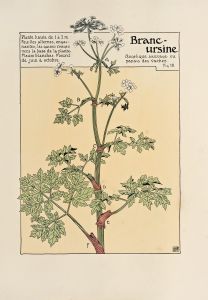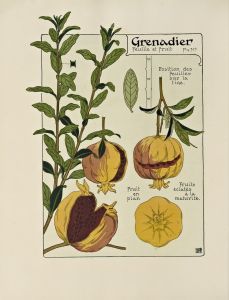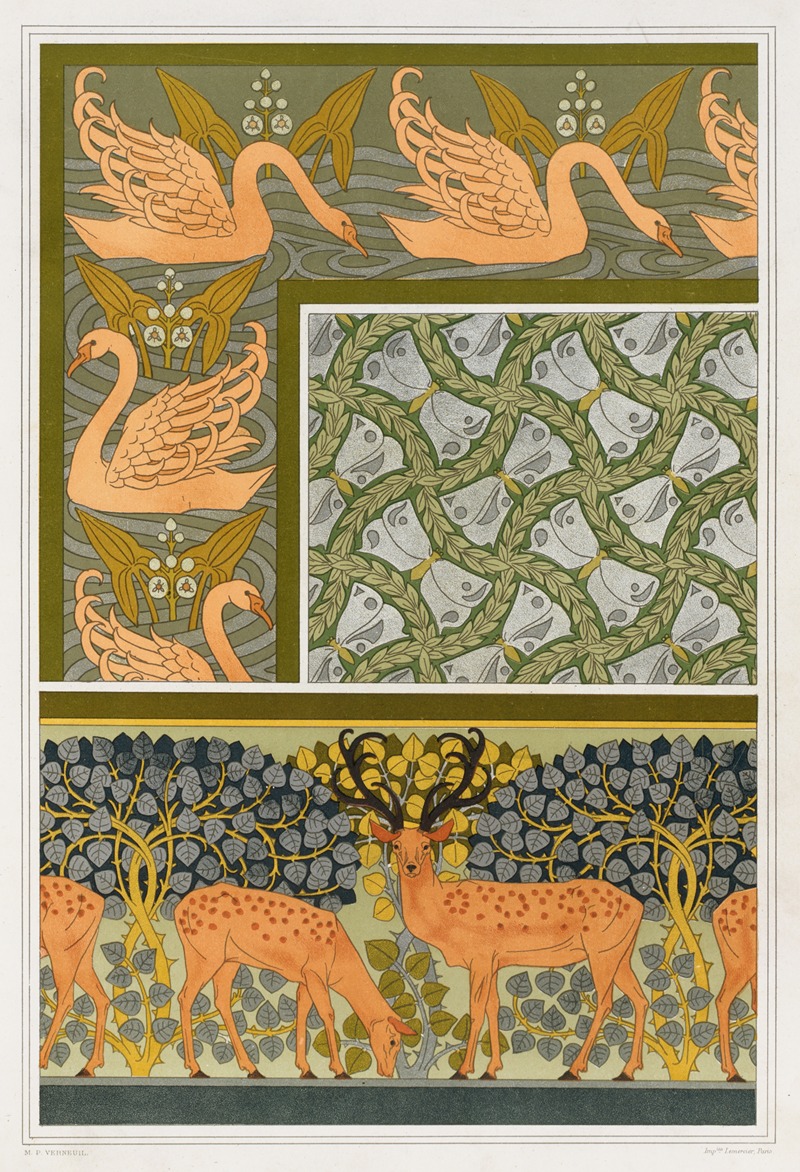
Cygnes et sagittaire, bordure. Pappillons et feuillages, étoffe. Cerfs et biches, frise.
A hand-painted replica of Maurice Pillard Verneuil’s masterpiece Cygnes et sagittaire, bordure. Pappillons et feuillages, étoffe. Cerfs et biches, frise., meticulously crafted by professional artists to capture the true essence of the original. Each piece is created with museum-quality canvas and rare mineral pigments, carefully painted by experienced artists with delicate brushstrokes and rich, layered colors to perfectly recreate the texture of the original artwork. Unlike machine-printed reproductions, this hand-painted version brings the painting to life, infused with the artist’s emotions and skill in every stroke. Whether for personal collection or home decoration, it instantly elevates the artistic atmosphere of any space.
Maurice Pillard Verneuil was a prominent French artist and designer known for his contributions to the Art Nouveau movement. Born in 1869, Verneuil's work was characterized by its intricate patterns and natural motifs, often drawing inspiration from flora and fauna. His designs were widely influential in the decorative arts during the late 19th and early 20th centuries.
One of Verneuil's notable works is "Cygnes et sagittaire, bordure. Pappillons et feuillages, étoffe. Cerfs et biches, frise." This piece exemplifies his skill in creating harmonious compositions that blend elements of nature with decorative art. The title itself suggests a rich tapestry of imagery: "Cygnes et sagittaire" translates to "Swans and Sagittarius," "bordure" means "border," "Pappillons et feuillages" translates to "Butterflies and Foliage," "étoffe" means "fabric," and "Cerfs et biches, frise" translates to "Stags and Does, frieze."
Verneuil's work often featured animals and plants, which were common themes in Art Nouveau, a movement that sought to break away from traditional artistic conventions and embrace more organic forms. The swans and Sagittarius likely refer to a decorative border design, possibly incorporating astrological or mythological symbolism. The butterflies and foliage suggest a fabric design, emphasizing the natural beauty and intricate details that Verneuil was known for. The stags and does in a frieze format indicate a continuous horizontal band of decoration, a common element in architectural and decorative arts.
Verneuil's designs were not limited to paintings or illustrations; they were often used in textiles, wallpapers, and other decorative objects. His ability to translate the beauty of nature into functional art pieces made his work highly sought after during his time. He was also known for his publications, which included pattern books and design manuals that disseminated his style and techniques to a broader audience.
Throughout his career, Verneuil collaborated with other artists and designers, contributing to the spread of Art Nouveau across Europe. His work was part of a larger movement that included figures like Alphonse Mucha and Gustav Klimt, who similarly embraced the flowing lines and natural motifs characteristic of the style.
Verneuil's legacy in the decorative arts is significant, as his designs continue to be appreciated for their elegance and complexity. His ability to capture the essence of nature and translate it into art that is both beautiful and functional remains a testament to his skill and creativity. While specific details about "Cygnes et sagittaire, bordure. Pappillons et feuillages, étoffe. Cerfs et biches, frise." may be limited, it is clear that this work embodies the key elements of Verneuil's artistic vision and his contribution to the Art Nouveau movement.





